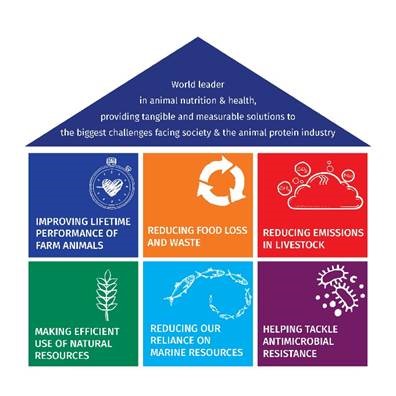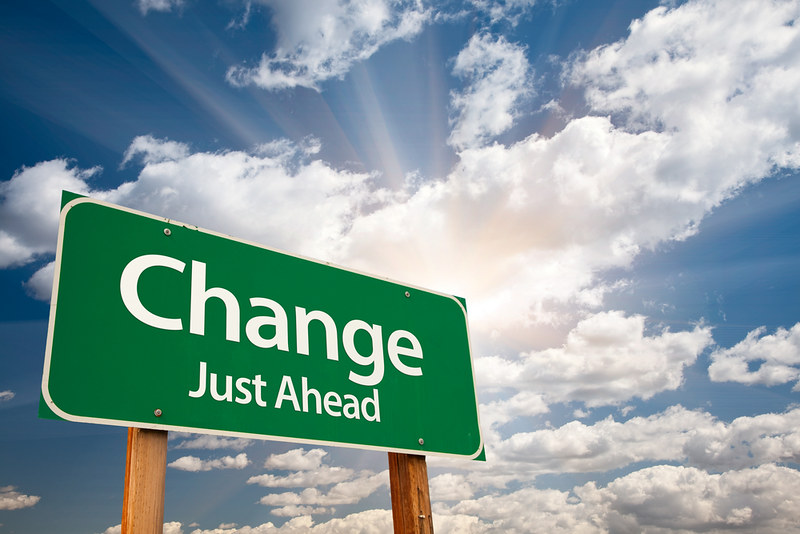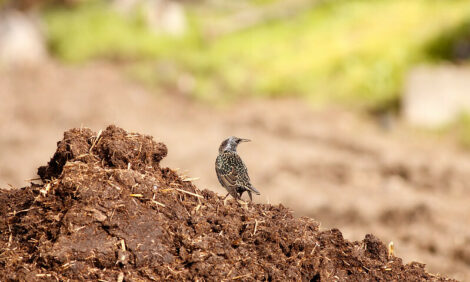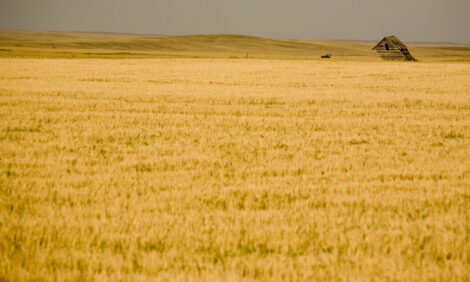



DSM’s reducing emissions from livestock sustainability platform resonates with industry change
DSM Animal Nutrition and Health has launched a new sustainability platform that will address the major challenges facing the livestock industry and resonate with how the industry can transform itself from within.To help tackle this issue, DSM Animal Nutrition and Health has launched a new sustainability platform - Reducing Emissions from Livestock. This new platform is one of six platforms that will address the major challenges facing the animal farming industry and resonate with how the industry can transform itself from within, says David Nickell, VP of Sustainability and Business Solutions at DSM Animal Nutrition and Health.
“Animal farming alone accounts for 14.5% of all human-derived GHG emissions. At DSM, we have been working for decades on innovative scientific solutions aimed at providing real answers to the challenges facing the agriculture industry including solutions for reduction in carbon emissions,” said Nickell.


DSM’s six platforms underpin their robust and cutting edge We Make It Possible strategic initiative, set out to achieve a worldwide transformation in animal protein production, to help bring better food, nutrition and health for all. They are aligned with the UN’s Sustainable Development Goals 2, 3, 12, 13, and 14. Here is a brief overview of each by Nickell:
1. Reducing emissions from livestock
In most value chains, there's a drive for de-carbonization. Within our platform, we focus on carbon reduction, but we also look at nitrogen emissions and phosphorus emissions, which are very important in terms of impact on land, fresh water and the marine environment.
DSM has developed multiple technologies to help tackle emissions in a significant way. One technology which has focused on methane reduction, is the Bovaer technology. It delivers a minimum 30% reduction in methane, making it transformational for the ruminant business. For example, many in the dairy industry are trying to move towards carbon neutrality. To make this move, improvements through productivity are needed that will reduce the carbon footprint along with the Bovaer technology that significantly reduces direct methane emissions, enabling the dairy industry to make a big step forward in terms of decarbonizing its value chain.
In some parts of the world, there are real nitrogen emission problems. DSM offers technology that can reduce ammonia emissions in a swine barn by up to 17% through the use of VevoVitall. In poultry, through more precise and improved nitrogen utilization efficiency, ProAct can reduce the amount of ammonia produced in a broiler shed, by 7% to 17% depending on the diet which also has the added benefit of fewer hock burns on the birds.
2. Helping tackle antimicrobial resistance
Reducing the amount of antibiotics that are being used in animal production is critical for the industry. For example, if you look at the US poultry industry, there has been huge changes, like “no antibiotics ever.” DSM has invested for more than a decade to develop technologies using alternative nutritional means to help the industry shift away from antibiotics using the most economical approach.
3. Reducing our reliance on marine resources
The aquaculture industry is a heavy user of marine resources like fishmeal and fish oil, which are in finite supply and that supply is in decline. To help manage this, DSM and Evonik have established Veramaris, a joint venture that has developed cutting-edge technology to produce omega-3 EPA and DHA via fermentation of natural marine algae at large scale. This will enable the aquaculture industry to grow more sustainably.
4. Making efficient use of natural resources
Drawing on our 20-year alliance with Novozymes, we develop novel feed enzymes that allow farmers to get more out of less - to get more out of soy, corn and other key feed ingredients and also allow us to start using more local raw materials. Enzyme technology allows the industry to look at by-product streams coming out of other industries which can circle back into animal nutrition, helping create a circular economy.
A trend around the world is starting to look at local feed protein sources and cereals and determine how to use them more wholly to improve the digestibility of lower-grade feed raw materials to perhaps replace bringing soy across the ocean.
5. Reducing food loss and waste
We all play a role in reducing food loss and waste individually. The amount of global food loss and waste contributes to about 8% of anthropogenic greenhouse gases. DSM is working to reduce that loss in animal value chains. For example, helping to reduce the incidence of mastitis on dairy farms can reduce food loss. If clinical mastitis is diagnosed, antibiotics are likely used so there’s a span of time that milk can’t be sold and it becomes food waste and literally gets dumped down the drain. Another example in poultry is trying to extend the layer hen cycle and ensuring the eggs produced have a strong shell that will not break in transit.
“Thinking about production systems worldwide, sometimes eggs are not handled quite as carefully in some parts of the world and it leads to breakage,” Nickell explained. “Through vitamin nutrition, particularly on vitamin D with bioactive forms like HyD, we know we can improve the skeleton of the bird, increase eggshell thickness and reduce breakages by up to 15%. Eggs are a very valuable source of protein and nutrition, and we want to make sure that fewer are wasted.”
6. Improving lifetime performance of farm animals
Lifetime performance is about productivity. It's how we try to keep the animal on the farm in the most productive way. In the dairy industry, this means ensuring the cow stays on the farm longer, so it has multiple lactations over its lifetime. Likewise, it means making sure a laying hen can consistently lay for up to 100 weeks, which is where the industry is trying to get to. In order for cows to milk longer, hens to lay longer and sows to farrow longer, the animals must be in the best condition to achieve these goals.
Sustainable animal production is a complete ecosystem
“For sustainable animal production to really work, it takes an interconnected ecosystem,” he said. “Improving lifetime performance of an animal helps reduce carbon footprint. We have invested heavily in very novel advanced technology around the area of directly reducing methane emissions from dairy cows. Our data has just been published in January for trials we've done with partners in Europe showing a 27% to 40% reduction in methane emissions from dairy cows depending on the diet. This can make a huge impact towards carbon neutral dairy production.”
It's also important that customers see the financial benefits of sustainable production. DSM’s data shows that producers can achieve a good ROI while reducing their carbon footprint.


“We measure the environmental footprint of customers through a lifecycle assessment or farm footprint of animal production,” he said. “This shows where the footprint is big, which is an indicator of inefficiencies in the system. For example, it might be that too much nitrogen is coming out of the system, and so we’d look at the diet to see if it’s possible to cut back on protein. We bring together the sustainability metrics and what it means to the farm's ability to operate or cost of disposal of certain aspects of waste streams, and then marry it up with the economics and the ROI for the farmer to make sure it makes economic sense.”
Taking the first step
The best place to start is with a full life cycle assessment and put a sustainability improvement plan in place. Part of that process includes benchmarking where you are currently at.
“For anyone to improve in this new environment with all the regulatory pressures coming, you need to baseline your production. What is the footprint? How does your farm compare to others in your peer group, nationally and internationally?” he said. “Then you need to understand, through correct measurement and a full life cycle assessment, where in the system are the problems – perhaps it’s your utilities or some of the feed ingredients or overall poor feed efficiency on the farm. Once you identify problems, you can set goals to create change. It doesn't happen overnight, but you make changes and continue to measure.”
It’s complex, but it also offers great opportunities for animal protein producers.
“There's a lot of pressure on the industry to improve in many areas and as a company, we recognize that and it’s why we operate across these six platforms and have such a broad portfolio and depth of knowledge to help make animal protein production more sustainable,” he said. “Although we're talking animal nutrition here, DSM is a nutrition player not only in the animal business, but throughout the food business and value chain and by working with multiple partners we’re making it possible!”









